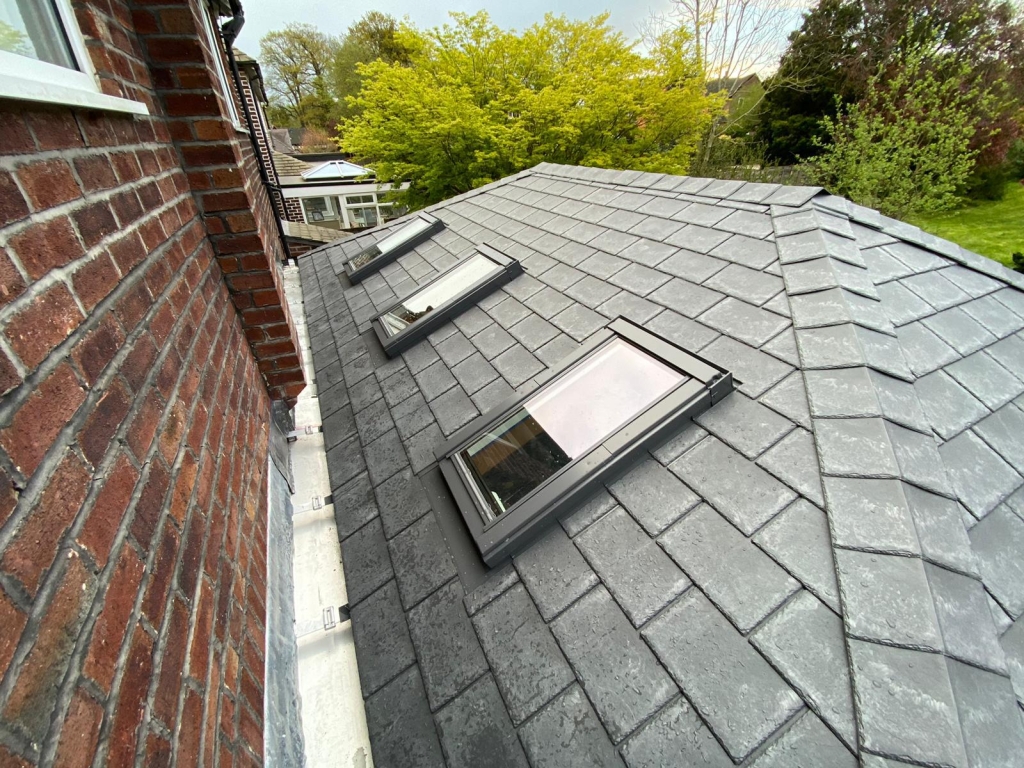Understanding Roof Replacement in the UK: What Homeowners Have to Know
Understanding Roof Replacement in the UK: What Homeowners Have to Know
Blog Article
Roof replacement is an essential aspect of property maintenance in the UK, especially considering the often harsh weather conditions that buildings face throughout the year. From heavy rainfall and snow in winter to strong winds in the spring and autumn, the roof is one of the most exposed parts of a building, requiring regular attention and care. Roofs can deteriorate over time due to the elements. A replacement is sometimes necessary in order to keep a building's structural integrity. This article will discuss the benefits of roof replacement. We'll also look at the warning signs that a roof is in need of replacing.
One of the first signs that a roof replacement may be necessary is visible damage such as missing tiles, sagging sections, or leaks that continue despite multiple repairs. In the UK, many homes have slate or tile roofs, and while these materials are durable, they are not immune to long-term wear. If you notice damp patches in the ceiling, mold growth or an increase in your energy bill, it could be a sign that your roof no longer provides adequate protection. Roofs older than 20-25 years are more likely to require replacement. A professional roofer should inspect the entire area to determine any damages. A professional roofer can give you a comprehensive report that will help determine whether or not a full replacement or partial repair is needed. Regular maintenance can extend a roof's lifespan, but eventually, every roof reaches the end of its functional life.
The right material for your roof replacement is important in the UK, because different materials offer varying levels of durability, cost, and insulation. Traditional slate is a popular choice for its classic appearance and long lifespan, but it can be expensive and heavy. Concrete tiles and clay tile are both common, and they can provide a balance of cost and performance. Composite or synthetic materials have become increasingly popular for those looking for a modern alternative. These alternatives are often lighter, easier to install, and come with long warranties. The style of your house and the local planning laws will influence what you choose, especially if it is a listed or conservation property. Consulting with a roofing expert can help ensure that your new roof is both functional and compliant with local guidelines.
Depending on factors such as the type of roof and materials used, its complexity, location, size, etc., the cost can vary greatly. On average, a complete roof replacement on a standard three-bedroom semi-detached house can cost between 5,000 and 12,000. The cost of labour is often a large part of this, while scaffolding and the removal and disposal waste also adds to it. However, this investment is often offset by increased property value and reduced future maintenance costs. It is vital to obtain at least three quotes from reputable contractors and ensure they are members of organisations like the NFRC (National Federation of Roofing Contractors) or TrustMark. To protect themselves from delays or poor work, homeowners should also have written warranties, clear contracts and insurance. Although the upfront cost may be high, a quality roof replacement offers long-term peace of mind. To gather new details please get redirected here
Choosing the right roofing material for your home is an important decision when planning a roof replacement. Your choice of material will impact not only your home's appearance, but its long-term energy efficiency. Slate and tiles are popular choices in the UK, known for their longevity and aesthetic appeal. These materials are particularly suited for traditional and period homes. Asphalt shingles and concrete tiles tend to be preferred for modern homes due to affordability and easy installation. Bitumen membranes or bitumen shingles may be required for flat roofs. Each material has its pros and cons, and the right choice depends on factors like budget, desired lifespan, and the specific architectural style of the home. A professional roofer will help you to make the right decision for your unique home.
Roof replacement is a major investment. However, you should view it as a long-term investment to ensure the safety and value your home. A well-constructed roof protects the home from weather damage, ensures energy efficiency, and enhances the property's curb appeal. The cost of roof replacement in the UK can vary greatly depending on the size of the property, the roofing materials chosen, and the complexity of the installation. The average cost of a roof replacement is between PS3,000 and PS7,000. While the initial cost may seem high, it's crucial to consider the long-term benefits of replacing an old, damaged roof. Most contractors offer financing, which makes it easy to spread the costs of the project.